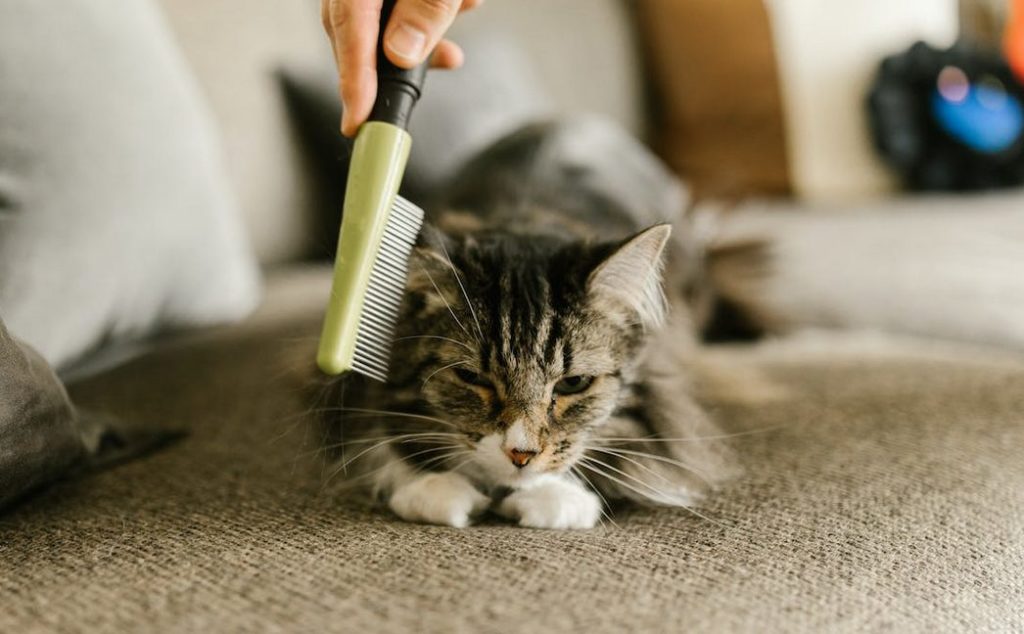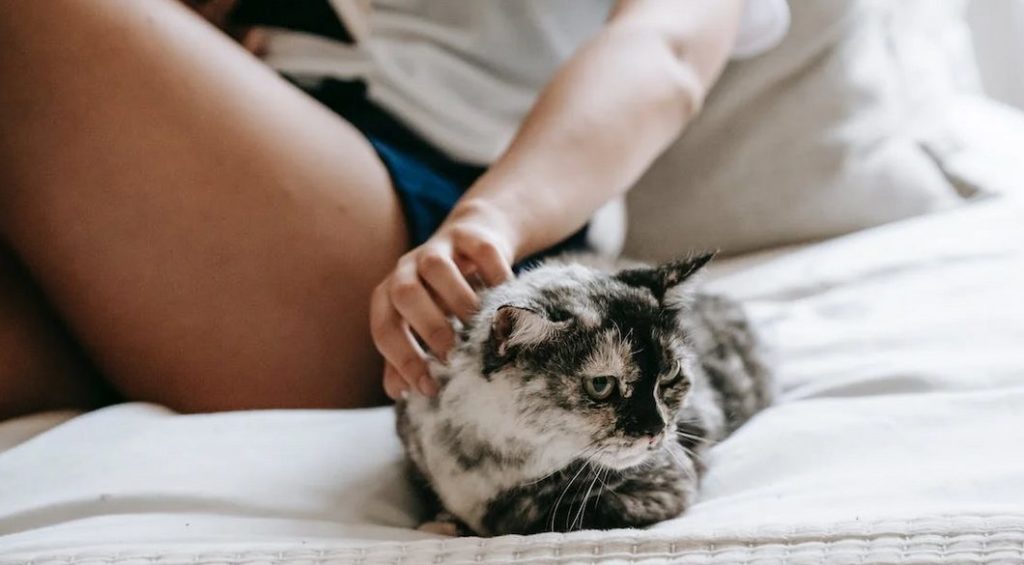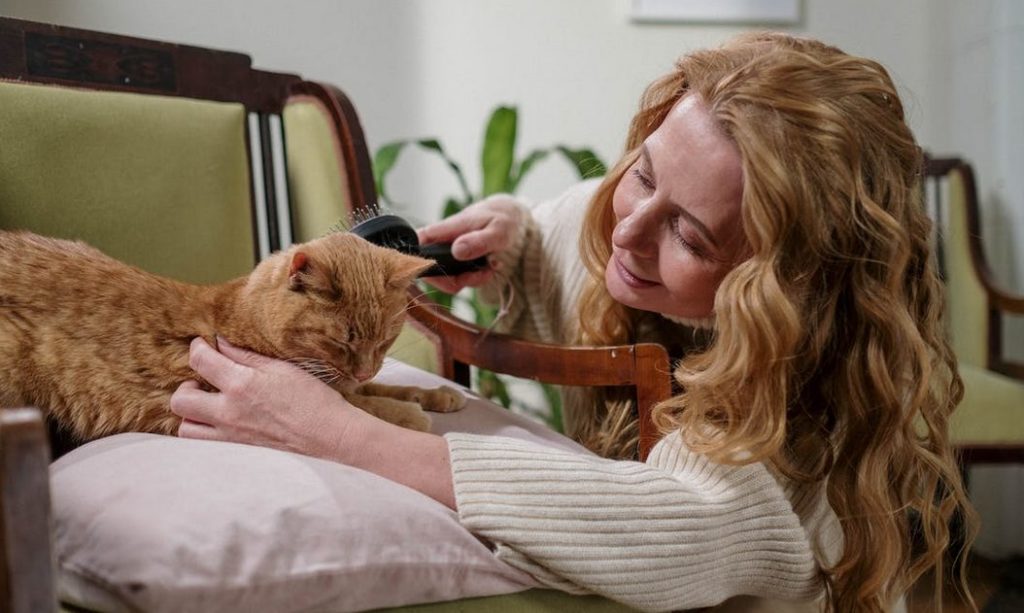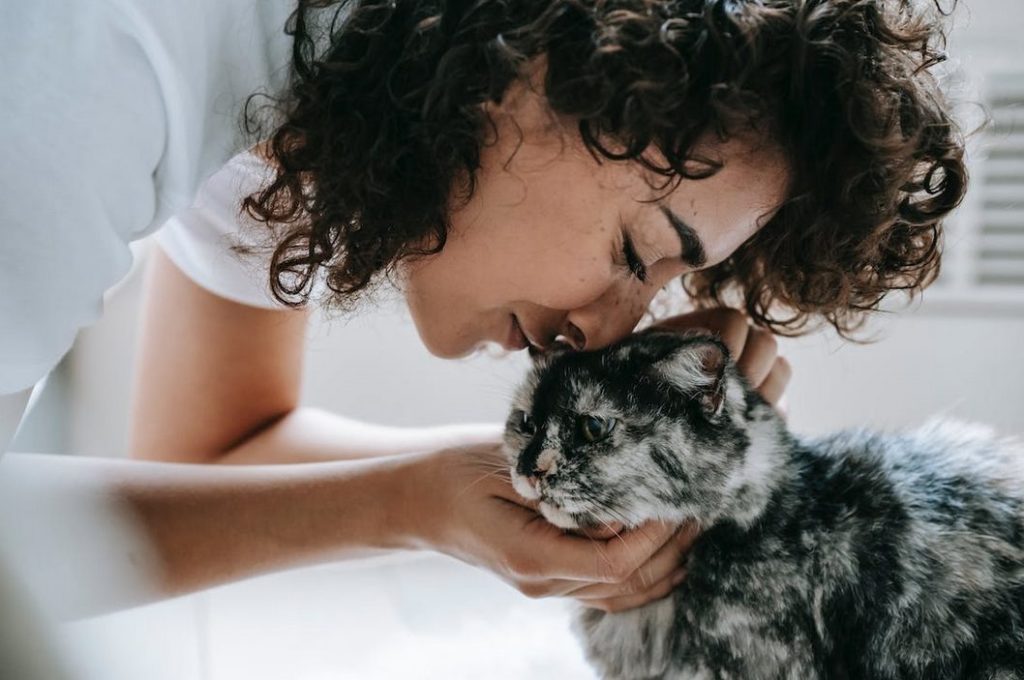How to calm your cat down for grooming is a question many cat owners struggle with. Grooming your cat is important for their health and hygiene, but it can also be a source of stress and anxiety for them. Cats are very sensitive and territorial creatures and may not like being touched or handled in certain ways.
Follow these 10 steps to calm your cat during grooming. Understand your cat’s behavior, create a positive environment, and use the right tools and techniques for your cat’s coat type. Following these steps will improve your relationship with your feline companion.
Step 1: Setting The Stage For Grooming Your Cat

The first step is to create a comfortable environment for grooming. Cats appreciate familiarity, so choose a room your cat likes and visits often.
Ensure the area is warm, well-lit, and free of distractions like loud noises, other pets, or children.
Some cats prefer to be groomed on elevated surfaces, such as a table or a counter, as this can make them feel more secure and less vulnerable. If you choose this option, ensure the surface is stable and covered with a soft towel or blanket.
- Choose a cozy, familiar, and quiet room.
- Remove potential stressors and distractions.
- Consider using an elevated and comfortable surface.
Step 2: Gradual Introduction Of Grooming Tools

The next step is to introduce grooming tools gradually. Let your cat sniff and explore them before using them. Associate the tools with positive experiences by offering treats alongside.
This will help your cat form positive associations and reduce their fear of the tools.
Use treats sparingly and only when your cat is calm and cooperative, not when they are struggling or hissing. This will help avoid reinforcing negative behavior and encourage good behavior.
- Introduce brushes or combs slowly and gently.
- Use treats to form positive associations.
- Reward calm and cooperative behavior.
Step 3: Gentle Handling While Grooming Your Cat

The third step is to build trust and comfort through touch. Start with gentle touches and strokes on your cat’s fur in its naturally growing direction.
This will help your cat relax and enjoy your touch. You can also use a damp cloth or a pet wipe to gently clean your cat’s face, eyes, and ears, as self-grooming often neglects these areas.
Be careful not to touch your cat’s nose, mouth, or whiskers, as these are very sensitive areas.
- Start with gentle strokes on your cat’s fur.
- Monitor your cat’s response for comfort cues.
- Use a damp cloth or a pet wipe to clean your cat’s face.
Step 4: Acclimation to Grooming Tools
The fourth step is to acclimate your cat to the tools. As your cat gets more comfortable, start touching them with the brush or comb, allowing your cat to feel the texture and pressure.
Start with the least invasive tool, such as a soft-bristled brush, and work up to more intensive tools, such as a metal comb or a de-shedding tool.
The best time to groom your cat is when they are relaxed and sleepy, such as after a meal or a play session. This will make them more receptive and less likely to resist.
- Let the cat inspect the tools.
- Gradually introduce tool contact and pressure.
- Groom your cat when they are relaxed and sleepy.
Step 5: Positive Reinforcement
The fifth step is to encourage good behavior with positive reinforcement. Offer treats or verbal praise when your cat remains calm during brief grooming sessions. This will help your cat associate grooming with rewards and pleasure.
Verbal praise should be calm and soothing, not loud or excited, as this can startle or stress your cat. Use a soft tone and frequently say your cat’s name to reassure them.
- Use treats to reinforce calm behavior.
- Verbal cues like “Good job!” can be reassuring.
- Use a soft tone and say your cat’s name often.
Step 6: Grooming Short Sessions

The sixth step is to keep initial grooming sessions short and sweet. Gradually increase the duration and intensity as your cat grows accustomed to the process.
Short sessions will help your cat avoid getting overwhelmed or bored and prevent you from getting frustrated or impatient.
Short sessions should last 5 to 10 minutes, depending on your cat’s tolerance and mood. Stop grooming before your cat shows signs of agitation, such as twitching, growling, or biting.
This will help end the session positively and prevent negative associations.
- Start with brief sessions.
- Increase grooming time and intensity gradually.
- Stop grooming before your cat gets agitated.
Step 7: Calming Techniques
The seventh step is to utilize calming aids and techniques to create a soothing ambiance during grooming. Consider using calming aids like pheromone sprays or diffusers, which mimic cats’ natural scents to mark their territory and communicate. These can help reduce stress and anxiety in your cat.
You can also play calming music to relax your cat. Some examples are classical, ambient, or specially composed music for cats. You can find these online or on streaming platforms. Music can mask any distracting noises and create a peaceful mood.
Some cats may also enjoy being massaged or petted during grooming, which can release endorphins and reduce stress. You can gently rub your cat’s head, neck, or back or use a massage glove or tool to enhance the sensation.
- Use pheromone sprays or diffusers.
- Play calming music to relax your cat.
- Massage or pet your cat during grooming.
Step 8: Understanding Body Language

The eighth step is to learn to understand your cat’s body language. Cats are very expressive and communicate their feelings through posture, facial expressions, and vocalizations.
By reading your cat’s cues, you can gauge their mood and adjust your grooming accordingly.
Signs of distress include:
- Flattened ears or ears turned sideways or back
- Dilated pupils or wide-eyed stare
- Flattened whiskers or whiskers pointing forward
- Arched back or crouched posture
- Rapid tail movements or tail tucked under
- Hissing, growling, or spitting
Signs of comfort include:
- Erect ears or ears tilted forward
- Normal or half-closed eyes
- Relaxed whiskers or whiskers pointing sideways
- Loose or stretched posture
- Slow tail movements or tail curled around
- Purring, kneading, or licking
Observe your cat’s body language closely and stop grooming if you notice any signs of distress. Resume grooming only when your cat is calm and relaxed.
- Observe your cat’s body language closely.
- Stop grooming if distress signals are evident.
- Resume grooming when your cat is calm and relaxed.
Step 9: Consistency
The ninth step is to be consistent and patient in your approach. Consistency is key to making grooming a routine and familiar activity for your cat.
Stick to a grooming schedule at the same time and place every week. This will help your cat anticipate and accept grooming as part of their normal life.
Be patient and gentle with your cat, and don’t force them to do something they don’t want. Respect your cat’s limits and preferences, and don’t get angry or frustrated if they don’t cooperate.
Remember that grooming is a learning process for both of you, and it may take some time and practice to get it right.
- Set a regular grooming schedule.
- Be patient and gentle with your cat.
- Respect your cat’s limits and preferences.
Step 10: Professional Help
The last step is to seek professional help if needed. Some cats may have special grooming needs, such as long-haired breeds, senior cats, or cats with medical conditions.
These cats may require more frequent or intensive grooming, such as shaving, clipping, or bathing, which can be risky or stressful.
Consult a vet or professional groomer if you are unsure or uncomfortable performing these procedures. They can offer tailored advice and assistance and ensure your cat is groomed safely and comfortably.
- Consult a vet or a professional groomer if needed.
- Feel free to seek expert guidance.
- Ensure your cat’s safety and comfort.
Conclusion
Grooming your cat doesn’t have to be a stressful ordeal. Following these 10 simple steps and understanding your cat’s needs can turn grooming into a pleasant experience for you and your feline friend.
Grooming your cat can have many benefits, such as improving their health, appearance, and well-being. It can also strengthen your bond and trust and make your cat happier and more confident.
Resources:
- Cat Grooming Tips | ASPCA
- Cat Grooming 101: How To Groom A Cat – DodoWell – The Dodo
- American Animal Hospital Association (aaha.org)
With a passion for cats and years of experience in cat care and grooming, I have gained valuable insights and expertise that I want to share with other cat lovers. I believe that every cat deserves the best care possible, and through this platform, I aim to empower cat owners like you to provide the utmost love and care for your feline companions.



